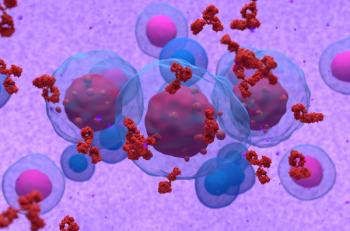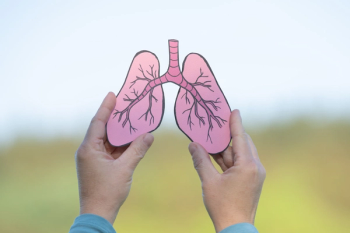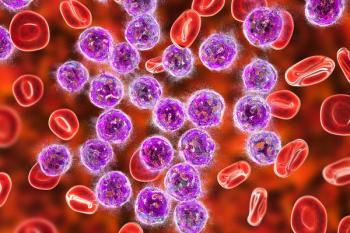
- Fall 2022
- Volume 16
- Issue 2
Trauma-Informed Care Is an Essential Skill for Pharmacists
Students can begin learning about treating patients with trauma early.
I grew up struggling to articulate what happened in my past—a past that led me around the globe and back home to my heritage in Iraqi Kurdistan, and to writing a book about my journey and living with unprocessed racial and developmental childhood trauma. Because I have few memories from my childhood, I use journaling, colors, drawings, and writing to retrieve pieces of fragmented memories and the suffering I carry within me. When I share stories of my trauma, people are bewildered by my neutral expression as I talk about the pain my family and I endured. A well-documented feature of trauma, one familiar to many, is the inability to emotionally articulate the experience. Understanding the features of trauma and learning to work with patients who have experienced traumatic events is essential for pharmacists to provide care.
In our society, the word “trauma” is often used casually. It is overutilized and inaccurately applied. To have a clear understanding of what trauma entails, the psychological community categorizes trauma by “Big T” and “Little t” events. “Big T” events can involve a single event or a series of repetitive exposures in which emotional distress dictates one’s common sense. These events can include war, natural disasters, displacement, and sexual or domestic violence. All of these can lead to a wide range of symptoms such as anxiety, depression, numbness, and shock. Those who experience such symptoms often suffer from posttraumatic stress disorder.
“Little t” experiences are more difficult to recognize, and their impact on the victim is harder to determine. In other words, “Little t” events are individualized; an event can be traumatic to one person yet normal to another. It is important to note that the “Little t” designation does not mean the emotional impact of the events are insignificant when compared with “Big T” experiences. There are many examples of “Little t” experiences, including non–life-threatening injuries, emotional abuse, death of a pet, bullying or harassment, and loss of significant relationships.
A person experiences trauma when exposed to events that are too much, too soon, and too fast for their unique nervous systems to process. The Substance Abuse and Mental Health Services Administration uses the “three Es” to define trauma: event, experience, and effect.1
“The complexities of these 3 interrelated components are what should be considered in clinical work,” says Bruce D. Perry, MD, PhD, clinical psychiatrist and coauthor of What Happened to You? Conversations on Trauma, Resilience, and Healing.2 Trauma can be induced by a variety of experiences, including toxic shaming, emotional abuse by a caregiver, or marginalization and dehumanization of minority groups.
Most people view the effect of trauma as a mental disorder or brain disease. However, trauma is a disease of the body that produces a variety of physiological changes experienced on a visceral level. Trauma is what happens inside of our body because of what we were exposed to. A person becomes scared, numb, or overwhelmed, and at times collapses. Patrick Carnes, PhD, author of The Betrayal Bond: Breaking Free of Exploitive Relationships, says those who experience trauma might react to minor triggers, freeze when frustrated, or become helpless in the face of simple challenges.3 In other words, they become out of touch with their reality, feelings, bodies, and needs, which in turn makes it extremely difficult to attend to anyone else’s reality, feelings, sensations, and needs. This intense reaction diminishes the victim’s ability to form intimate relationships and make decisions (particularly when under pressure), and often leads them to take things out of context. Their behavior can be seen as neurotic or out of control.
HOW TO BECOME TRAUMA INFORMED
To master trauma and to help patients who may have experienced trauma, we must bring ourselves to a full awareness of the present moment, to keep us calm and focused when exposed to images, thoughts, or sounds that are reminiscent of our past, and to restore a full ownership of our body, mind, and soul. Below are some recommendations on how to become trauma informed:
- Recalibrate your emotional brain. The core to recovery from trauma is a thorough awareness of your feelings. Through mindfulness, you learn to use your brain to guide your body toward healing through the “top-down” vagal pathway. You learn to notice and tolerate the physical sensations when remembering the past. With trauma being a visceral disease, we need to open ourselves to our inner experiences and focus our bodies on sensations through mindfulness. Mindfulness calms the sympathetic nervous system and makes us less likely to be thrown into a fight-or-flight response. The goal of mindfulness is to identify some consistent activities that train your mind to stay present in the moment.
- Learn to love your body. There are yoga practices specifically designed for those with trauma. Through yoga, you can learn to empower your body and send the signals to your brain using “bottom-up” vagal pathway. Regardless of what type of yoga you practice, all include asanas (stretching and posture work) and pranayamas (breath work). Just like mindfulness, yoga improves the relationship with the body. Yoga is about looking inward and listening to the things our body has to say to us and focuses attention on breathing and sensations with every movement. As you continue to practice, you start noticing a connection between your emotions and your body.
- Regulate your emotional brain. Learning to slowly breathe in, hold, and slowly release your breath when accessing painful memories is helpful in recovery. As you continue taking deep breaths, you are slowly activating the peripheral nervous system, allowing you to relax and rest.
- Seek out trauma-informed therapy. It is critical that those who have gone through traumatic experiences work with a trauma-informed therapist. Although general talk therapy can be beneficial for mirroring and validation of some emotions, rational thinking is of almost no help when in a hyperalert state. A trauma-informed therapist can help develop strategies that can be used to resolve trauma and deal with its symptoms in everyday life.
- Build a healthy, supportive network. Family and friends may reject the person with trauma or lose their patience as the person keeps reliving painful memories from their past. It is extremely hard for a trauma survivor to feel safe in an environment that often judges them for their feelings. Finding a professional, nonjudgmental support group can provide a health network of people who have similar experiences and are discovering healthy ways to deal with them.
- Find a meaningful cause. Stress hormones are released in response to danger and are meant to give us the strength and willpower to respond to a threat. How can you leverage that strength and willpower toward a meaningful end? Research shows that those who actively do things to deal with a disaster are often less traumatized.
- Remember that movement is medicine. Decades of research have confirmed that exercise is one of the most powerful tools to help with stress. Movement helps with flexibility, balance, and good health. Movement of any sort can help release tension, deepen our breathing, and boost our memory and mood. Moving your body can include anything you like to do such as kickboxing, running, swimming, and dancing.
- Adopt a furry friend. We all need the dose of companionship and unconditional love that pets can provide. Since bringing home my puppy, my own nightmares have faded away. Our pets help us reconnect with our community, serving as our companions when no one is around to give us support. Having a pet that needs to be cared for can also provide you with a sense of purpose, a reason to get out of bed on those difficult days. Just like the animal in all of us, our furry friends are wired for connection. Pets love unconditionally, forgive immediately, and will do anything to make us happy.
- Health through art. Art, music, and dancing are used around the world to treat trauma, particularly to help people express their sufferings. Those who struggle with not being able to articulate their trauma and feelings may be able to express themselves through a creative process such as art or music.
- Realize that health begins in your gut. Our food choices affect our daily health, sleep, and response to stress. Although there is no one-size-fits-all method when it comes to making healthy choices, one cannot argue about what is considered healthy for our gut. When we are in a fight-or-flight state, we are not able to relax and digest. As a result, no matter how healthy our diet is, we end up expelling the food before giving our gut a chance to absorb all the nutrients that we need, leaving our body starved. Our gut serves as a main production site for 90% of the body’s serotonin, which is the key neurotransmitter that stabilizes our mood and well-being. Although this article is not meant to serve as your guide to a healthy diet, I encourage you to explore your healthy diet options with a professional.
Interested in learning more? Check out this
About the Author
Helen Sairany earned her PharmD degree from Northeastern University and her MBA from the University of Maryland. She has extensive experience in executive leadership, administrative management, regulatory practice, and accreditation systems thanks to her work as a trauma-informed pharmacist; state executive and CEO for the South Carolina Pharmacy Association; director of content development and partnership at the American Pharmacists Association; director of quality assirance at the University of Duhok College of Pharmacy; and field provider for Doctors Without Borders in Iraq and Western Syria.
References
1. Substance Abuse and Mental Health Services Administration. SAMHSA's concept of trauma and guidance for a trauma-informed approach. October 2014. Accessed September 9, 2022. https://store.samhsa.gov/product/SAMHSA-s-Concept-of-Trauma-and-Guidance-for-a-Trauma-Informed-Approach/SMA14-4884
2. Perry BD, Winfrey O. What Happened to You? Conversations on Trauma, Resilience, and Healing. Macmillan; 2021.
3. Carnes PJ. The Betrayal Bond: Breaking Free ot Exploitive Relationships. Health Communications Inc; 1997.
Articles in this issue
almost 3 years ago
Student Pharmacists Can Play Important Role as Patient Advocatesalmost 3 years ago
Pharmacy Students Can Improve Gender Equity in Clinical Researchalmost 3 years ago
Pharmacogenomics Offers a Glimpse Into the Future of PharmacyNewsletter
Stay informed on drug updates, treatment guidelines, and pharmacy practice trends—subscribe to Pharmacy Times for weekly clinical insights.
















































































































































































































